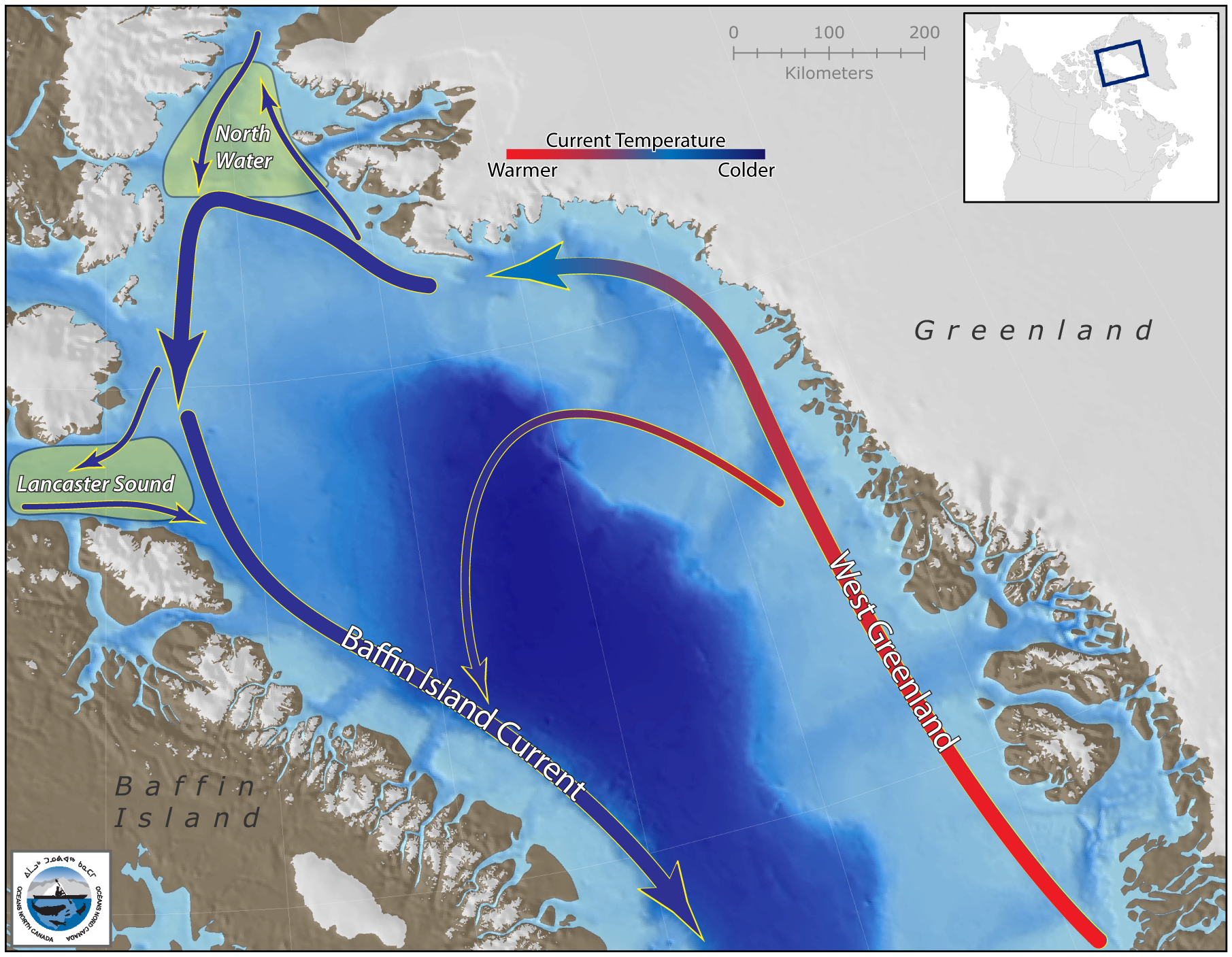From the North Water Polynya to Lancaster Sound
The North Water Polynya, an area of open water surrounded by sea ice, lies between Greenland and Canada in northern Baffin Bay. The world’s largest polynya at about 85,000 square kilometres, it creates a warm microclimate that provides a refuge for narwhal, beluga, and bowhead whales to feed and rest. While thin ice does form in some areas, the polynya is kept open by wind, tides and an ice bridge on its northern edge. Named the “North Water” by 19th century whalers who relied on it for spring passage, this polynya is one of the most biologically productive marine areas in the Arctic Ocean.
The polynya’s open waters allow for an unusually early spring plankton bloom. This provides food for Arctic cod, a species that plays a critical role in supporting the entire ecosystem. Large concentrations of marine mammals, from walrus to seals and polar bears, feed at the ice edge until spring break-up. The same habitat provides vital feeding grounds for millions of seabirds, including an estimated two-thirds of the world population of dovekie and thick-billed murres.
This region has been home to the northernmost human settlements in the world for at least 5,000 years. Inuit communities in Canada and Avanersuaq (Northwest Greenland) rely on the polynya’s concentration of marine mammals to sustain their traditional way of life.
There is evidence that the North Water was visited by the Vikings in Southern Greenland in the 13th century. It wasn’t until 1616 that William Baffin and the HMS Discovery sailed into this region, naming its landmarks such as Smith Sound and Lancaster Sound after those who financed their expeditions. Between the 15th and 19th centuries, European whalers arrived and hunted bowhead whales to the brink of extinction.
The North Water ecosystem has become a popular field study for scientists trying to unlock the oceanographic and biological secrets of Arctic polynyas. Researchers have also conducted intensive studies on the region’s response to global climate change because of its mid-Arctic latitude.
The North Water Polynya is closely connected to Lancaster Sound (Tallurutiup Tariunga) and Baffin Bay by a powerful system of ocean currents that directly affect the region’s climate and biology. The West Greenland Current follows that country’s coastline and moves warm and salty Atlantic water north, reaching all the way to the North Water Polynya. An upwelling of warmer water in this polynya helps keep it partially ice-free throughout the year, even when the ocean directly north and south is frozen. Another arm of the West Greenland current reaches into Lancaster Sound, delivering Atlantic waters into the Arctic Ocean and contributing to that area’s rich ecology.
Endnotes:
Melling, H., Gratton, Y., Ingram, G. 2001. Ocean Circulation within the North Water polynya of Baffin Bay. Atmosphere-Ocean 39 (3): 301 – 325.
Stirling, I. 1980. The Biological Importance of Polynyas in the Canadian Arctic. Arctic 33 (2): 303-315












